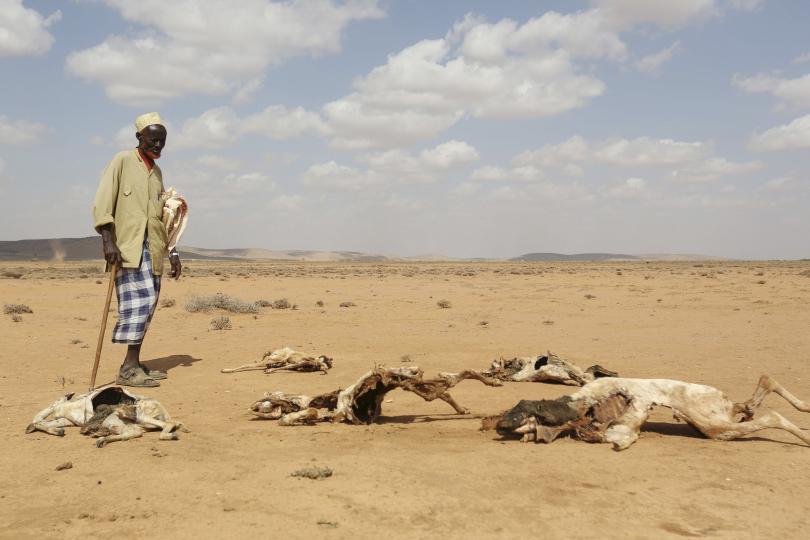Aid agencies, UN clash over ‘famine threshold’ as hunger ravages Somalis

By T Roble
GOOBJOOG NEWS|MOGADISHU: Difference between a section of aid agencies in Somalia and the UN over the declaration of famine as both sides offer varying views on the state of the humanitarian situation in the country.
On Wednesday, the UN Humanitarian agency (OCHA) and the Somali government’s special envoy on the drought Abdishakur Warsame said famine had been staved off in October thanks to the quick response from the international community.
“Joint efforts in mobilising and coordinating life-saving humanitarian support to respond to the emergency situation was very critical in ensuring that famine was prevented in October,” the Warsame said.
OCHA issued similar views on the situation in the country. “The collective scale-up of humanitarian assistance, including Somali capacities, has prevented food insecurity and acute malnutrition from reaching Famine (IPC Phase 5),” OCHA chief Adam Abdelmoula said.
‘Earlier projections of famine between October and December 2022 among rural agro-pastoralists in Baidoa and Buur Hakaba districts and displaced people in Baidoa town in Bay Region have not materialized, but the underlying crisis has not improved, and even more, appalling outcomes are only temporarily averted, according to the 13 December IPC Analysis, a statement from OCHA added.
However, the Norwegian Refugee Council (NRC) which is a major humanitarian agency in Somalia and other parts of the world differed from the UN and the Somali government noting Somalia was already steeped in famine.
“Let us be absolutely clear: Famine is already present and killing tens of thousands silently in Somalia. There is not enough data being collected and shared to inform the Famine Review Committee’s decision adequately, NRC country Director Mohamed Abdi.
NRC said the ‘declaration on hunger in Somalia fails to convey the extreme severity of the situation on the ground in many parts of the country. We’re afraid this may lead the international community into further complacency.’
The Famine Review Committee of the UN’s Integrated Food Security Phase Classification (IPC) ‘ famine thresholds have not been passed’ but noted the situation remained ‘extremely serious.
USAID chief Samantha Power echoed similar sentiments while announcing an additional $411 million for humanitarian support to Somalia on Wednesday.
FAMINE THRESHOLD
According to IPC, a famine in a given area occurs ‘when food security, nutrition and mortality altogether portray famine conditions, meaning at least 20% of the population is affected, with about one out of three children being acutely malnourished and two people dying per day for every 10,000 inhabitants due to outright starvation or to the interaction of malnutrition and disease.’
For famine clarification, IPC adds, an affected area ‘needs to have extremely critical levels of acute malnutrition and mortality.
These definitions and thresholds have now left aid agencies and the UN at odds over the actual situation in Somalia.
In 2011, over 250,000 people, most of whom were children perished as famine ravaged the country. By the time the UN was declaring the famine, the situation was already out of hand.